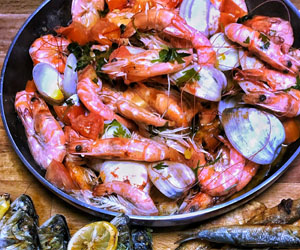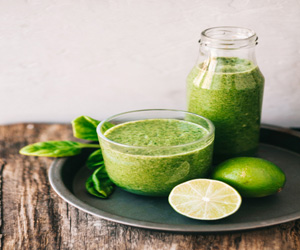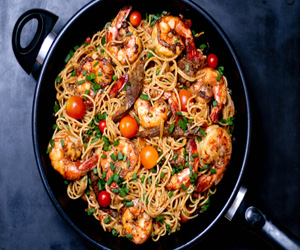


A Culinary Journey Through Your Backyard

Homegrown flavors bring a unique and satisfying dimension to the world of culinary experiences. They capture the essence of locally sourced, freshly harvested ingredients right from your backyard or garden. The process of cultivating, nurturing, and eventually incorporating homegrown produce into your meals can be a rewarding journey that elevates the flavors, quality, and sustainability of your food.
The Beauty Of Homegrown Produce: Homegrown flavors revolve around fruits, vegetables, herbs, and even edible flowers that you cultivate in your own garden or backyard. These ingredients are often grown without synthetic pesticides or chemicals, which not only ensures a healthier and more natural outcome but also allows you to have full control over their quality.
Flavorful Benefits:
One of the most immediate and compelling benefits of homegrown flavors is the enhancement of taste. Here are a few reasons why homegrown produce tastes better:
Ripeness: Homegrown produce is harvested when it's perfectly ripe, ensuring that you experience the fullest, most vibrant flavors.
Nutrient Density: The time and care you invest in your homegrown produce can lead to higher nutrient content, contributing to more intense and wholesome flavors.
Variety: You have the freedom to choose a wide variety of fruits, vegetables, and herbs that may not be available at your local grocery store, diversifying your palate.
Unique Varietals: Experimenting with different heirloom or unusual plant varieties can lead to exceptional and distinctive flavors that are hard to find elsewhere.
A Sustainable Choice: Homegrown flavors align with the principles of sustainability and environmental responsibility. When you grow your own produce, you reduce your carbon footprint, as there are no transportation or packaging requirements. Additionally, you have the flexibility to practice organic and eco-friendly gardening, reducing the use of harmful chemicals and conserving resources.
Cultivating Homegrown Flavors:
Choose Your Plants: Decide which fruits, vegetables, herbs, or edible flowers you want to cultivate. Consider what grows well in your climate and what you enjoy eating.
Prepare The Soil: Ensure your soil is healthy, well-draining, and nutrient-rich. Add compost or organic matter to enhance soil quality.
Plant With Care: Follow proper spacing and planting instructions for your chosen crops. Keep an eye on sunlight requirements and water them consistently.
Protect Your Garden: Be mindful of pests and diseases. You can use organic pest control methods to safeguard your plants.
Harvest At The Right Time: Harvest your produce when it's at its peak ripeness to maximize flavor.
Get Creative: Experiment with your homegrown ingredients in various dishes, preserving them, or sharing the abundance with friends and neighbors.
Enjoying The Fruits (And Vegetables) Of Your Labor: Once you've cultivated your homegrown produce, it's time to enjoy the flavors in your culinary creations. Try incorporating them into salads, salsas, pasta dishes, or even dessert recipes. Fresh herbs can elevate your cooking, while homegrown fruits and vegetables can add an extra layer of taste and nutrition to your meals.
Homegrown flavors are a testament to the simple joys of nurturing and celebrating the taste of your own harvest. They offer freshness, quality, and sustainability that elevate your culinary experiences. Cultivating your own produce not only connects you with the land but also encourages responsible food choices and a deeper appreciation for the flavors of home. Whether you have a sprawling garden or a few pots on your balcony, homegrown flavors have the potential to enrich your life and your palate.


Culinary Treasures That Stand The Test Of Time
 One of the defining characteristics of all-time favorites is their timeless appeal. These are the dishes that remain consistently beloved, regardless of the latest culinary trends. They resonate with our taste buds and our memories, serving as a source of comfort, nostalgia, and satisfaction. These are the recipes we turn to when we seek solace in the familiar.
One of the defining characteristics of all-time favorites is their timeless appeal. These are the dishes that remain consistently beloved, regardless of the latest culinary trends. They resonate with our taste buds and our memories, serving as a source of comfort, nostalgia, and satisfaction. These are the recipes we turn to when we seek solace in the familiar.
Beyond their irresistible flavors, all-time favorites are often imbued with cultural and familial significance. They are the dishes that have been passed down through generations, each version tweaked and perfected over time, resulting in recipes that are deeply rooted in tradition. All-time favorites provide a connection to our culinary heritage, preserving the techniques, ingredients, and flavors that have been treasured for centuries.


A Taste Of Nostalgia And Culinary Delight

The appeal of classic comfort food extends beyond its sentimental value. These dishes are designed to satisfy not only our physical hunger but also our emotional cravings. Take, for example, a steaming bowl of chicken noodle soup. Its rich, savory broth and tender chunks of chicken soothe the soul and provide a sense of well-being. A slice of warm apple pie with a scoop of vanilla ice cream can transport us to a place of pure joy and indulgence. Whether it's the crispy, golden exterior of fried chicken or the creamy, cheesy layers of lasagna, classic comfort food speaks to our hearts as much as it does to our taste buds.
Classic comfort food varies from region to region and culture to culture. In the American South, it might be a plate of buttery, flaky biscuits and sausage gravy. In Italy, it could be a hearty bowl of spaghetti carbonara. In Japan, it might take the form of a comforting bowl of ramen.
Striking The Right Balance In Modern Life
 Quality As A Cornerstone
Quality As A Cornerstone
On the other hand, quality is an essential aspect of life that affects our satisfaction and long-term well-being. Whether it's the quality of the food we eat, the products we use, or the relationships we foster, the intrinsic value often trumps the allure of convenience. Quality provides lasting enjoyment and a sense of fulfillment.
The Food Conundrum
One area where convenience vs. quality is palpable is in our food choices. Fast food and processed meals are convenient and quick, but they often lack the nutritional value and flavors of freshly prepared, high-quality ingredients. Overindulging in convenience foods can lead to health problems, while a commitment to quality, fresh, and unprocessed foods can promote well-being and a better relationship with what we eat.
More Than Just A Full Stomach
 Comfort And Tradition: Certain dishes and meals hold a special place in our hearts due to their comforting and traditional nature. These are the meals that evoke childhood memories, cultural heritage, and the warmth of home. A bowl of grandma's soup or a holiday feast can provide a sense of nostalgia and security, offering more than just physical satisfaction.
Comfort And Tradition: Certain dishes and meals hold a special place in our hearts due to their comforting and traditional nature. These are the meals that evoke childhood memories, cultural heritage, and the warmth of home. A bowl of grandma's soup or a holiday feast can provide a sense of nostalgia and security, offering more than just physical satisfaction.
Mindful Eating: Mealtime satisfaction also embraces the concept of mindful eating. It's about being present in the moment, savoring each bite, and appreciating the nourishment that food provides. Mindful eating encourages us to eat with intention, to listen to our bodies, and to make conscious choices about what and how we consume.
Well-Being And Health: Satisfying meals contribute to overall well-being and health. When we are satisfied with our meals, we are less likely to overeat or indulge in unhealthy choices. This, in turn, supports our health and wellness goals, helping us maintain a healthy weight and reduce the risk of chronic diseases.






Embracing A Gluten-Free Lifestyle
 Treatment With A Gluten-Free Diet
Treatment With A Gluten-Free Diet
The cornerstone of celiac disease treatment is the complete elimination of gluten from the diet. A gluten-free diet helps to prevent the autoimmune response and allows the small intestine to heal. When followed diligently, it can lead to symptom resolution and improved overall health.
Challenges Of A Gluten-Free Lifestyle
While a gluten-free diet is the only effective treatment for celiac disease, it presents numerous challenges:
Label Reading: Learning to decipher food labels and identify sources of hidden gluten can be overwhelming.
More Than Just Food For The Body
 Nourishing dishes are characterized by their ability to provide comfort and solace. They are often the recipes that offer a warm embrace during challenging times, a source of solace when we seek refuge from the chaos of the world. Whether it's a bowl of hearty chicken soup on a cold winter day, a plate of creamy macaroni and cheese, or a fragrant curry simmering on the stove, these dishes provide more than just sustenance; they offer a sense of well-being.
Nourishing dishes are characterized by their ability to provide comfort and solace. They are often the recipes that offer a warm embrace during challenging times, a source of solace when we seek refuge from the chaos of the world. Whether it's a bowl of hearty chicken soup on a cold winter day, a plate of creamy macaroni and cheese, or a fragrant curry simmering on the stove, these dishes provide more than just sustenance; they offer a sense of well-being.
At the heart of nourishing dishes is the concept of emotional nourishment. These are the meals that evoke feelings of nostalgia, family, and home. They remind us of simpler times, of the loving hands that prepared them, and of the comforting embrace of familiar flavors. Nourishing dishes go beyond filling the belly; they fill the heart and the soul.
One remarkable aspect of nourishing dishes is their versatility. They can be found in virtually every culture and cuisine, reflecting the diversity of the world's culinary traditions. From the soul-warming stews of Europe to the fiery curries of Asia, and from the rich and hearty comfort foods of the Americas to the simple, wholesome dishes of the Mediterranean, nourishing dishes showcase the breadth of global gastronomy and the unique way each culture creates meals that comfort and satisfy.
The Art Of Ingredient Substitutions
 All-Purpose Flour: If you're out of all-purpose flour and need a substitute for baking, you can use alternatives like almond flour, coconut flour, or oat flour, depending on the recipe.
All-Purpose Flour: If you're out of all-purpose flour and need a substitute for baking, you can use alternatives like almond flour, coconut flour, or oat flour, depending on the recipe.
Sugar: For a healthier alternative, you can replace refined sugar with options like honey, maple syrup, or coconut sugar.
Butter: When a recipe calls for butter, you can use alternatives like coconut oil, olive oil, or unsweetened applesauce, depending on the application.
Heavy Cream: To replace heavy cream in savory dishes, you can use ingredients like Greek yogurt, silken tofu, or a mixture of milk and butter. For desserts, coconut cream can be a suitable alternative.
Healthier Ingredient Substitutions
Ingredient substitutions aren't just about convenience; they can also be used to make your dishes healthier. For example:
White Rice: Swap white rice for brown rice, quinoa, or cauliflower rice to increase fiber content and boost nutritional value.
Mayonnaise: In salads and sandwiches, you can replace mayonnaise with Greek yogurt for a lower-fat alternative.
Breadcrumbs: Instead of breadcrumbs, you can use crushed nuts or rolled oats for a gluten-free option in recipes.
Dietary Restrictions And Allergies
Ingredient substitutions are especially crucial for individuals with dietary restrictions and allergies. For those with gluten allergies, there are many gluten-free flours and starches available. People with lactose intolerance can use lactose-free milk or dairy-free alternatives. Those with nut allergies can often substitute seeds, such as sunflower or pumpkin seeds, for nuts in recipes.